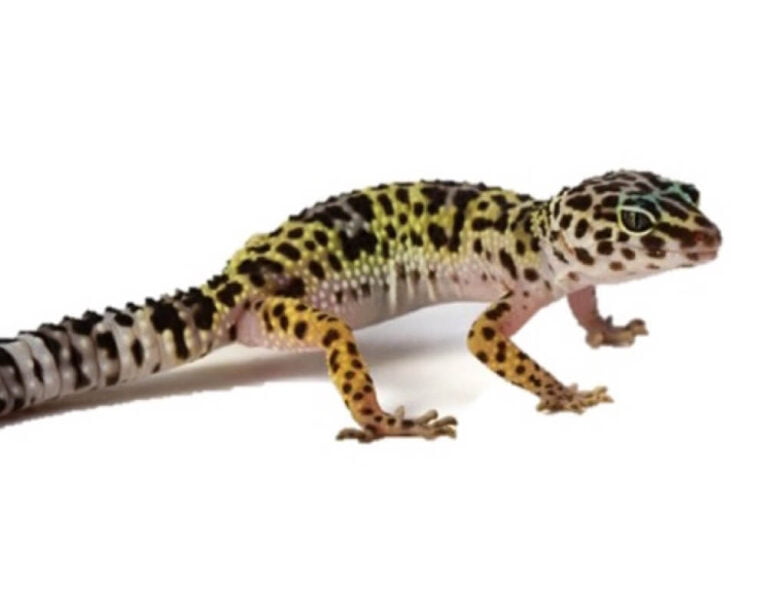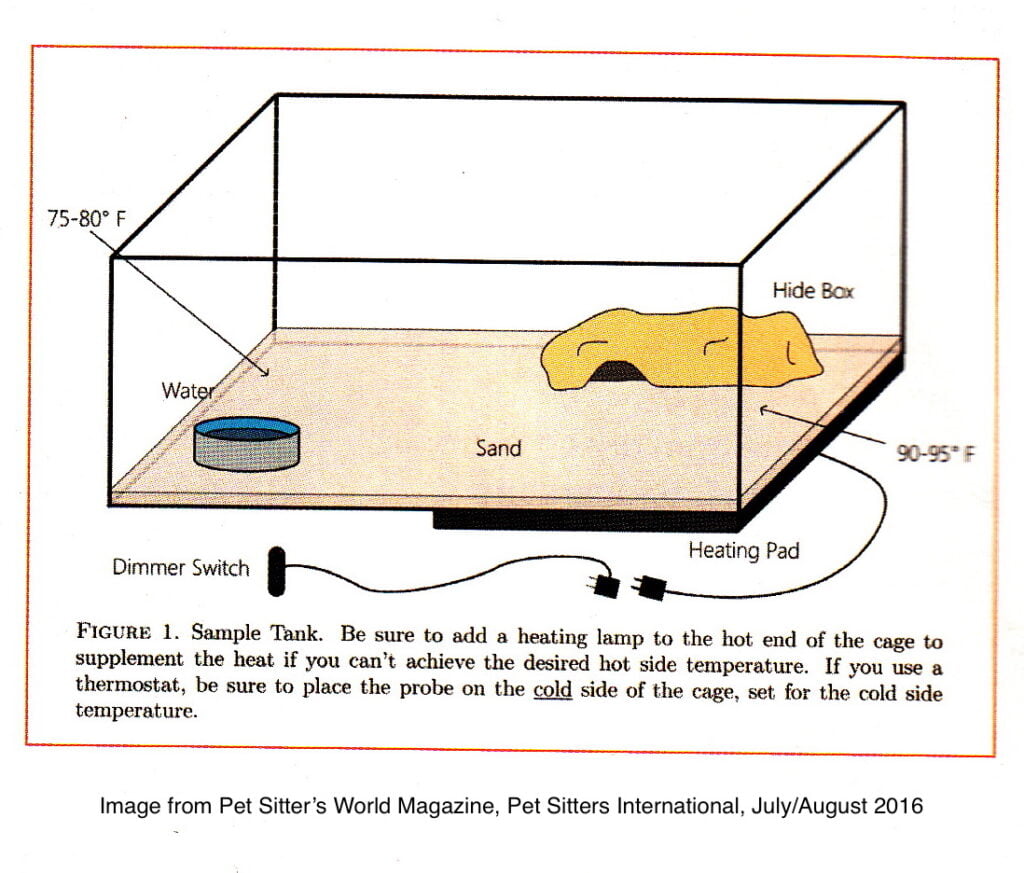
Although dogs and cats are some of the most common pets, especially in terms of pet care services, there are many people who enjoy the companionship of more exotic animals like reptiles and amphibians. Since Prospect Pet Sitting, LLC offers pet sitting services for those with scaly children, not just those with fur, feathers or scales, it only makes sense to offer tips for exotic pet lovers. If scaly pets creep you out, then you probably want to skip this article. If however, you are fascinated by animals of a more exotic fair, already own one as a pet or are considering getting one as a pet, this article is for you.
Reptiles and amphibians make great companion animals especially in places where space is a premium, like apartments. Also, some apartment owners do not permit renters with dogs and cats. The great thing about these type of animals is that they are quiet, hypoallergenic, can live in small spaces, are virtually odor free and do not have fleas. As recently reported in Pet Sitter’s World Magazine by Pet Sitters International, the most popular herptile pets in the United States today are the Corn Snake, Leopard Gecko and Russian Tortoise. This article focuses on the basic care and housing of the Leopard Gecko with emphasis in the following areas:
- Habitat
- Temperature
- Bedding
- Water
- Hide Box
- Tank Size
- Feeding
- Diet
- Vitamins
- Maintenance
- Shedding
- Cleaning
- Handling
- Sample Tank
Leopard geckos (Eublepharis macularius) come from the semi-arid desert regions of Afghanistan, Pakistan and India. Accordingly, this is the type of environment we are trying to emulate.
Habitat
Temperature
Establish a temperature range from 80 to 95 degrees Fahrenheit. One end of the cage/tank should be cool (75 – 80° F) with the other end hot (90 – 95° F) as it is important to offer a choice of conditions for a gecko. Always measure the temperature at the floor of the cage/tank as opposed to the cage/tank wall. In general, treat the cold side as an absolute goal and the hot side as a minimum goal.
Bedding
Sand works well for leopard geckos. Vita-Sand is recommended to prevent impaction, but Repti-sand is another dye-less alternative. Other substrates can include pine shavings or hardwood chips. Make sure to avoid aromatic woods like cedar as they are poisonous to the leopard gecko.
Water
Provide a shallow dish with fresh water available at all times or mist the sides of the cage/tank twice daily.
Hide Box
Place broken pottery or other available products on the hot side of the cage/tank to provide the gecko a dark place to hide. Placing damp moss or shavings in the box is recommended to aid in shedding
Tank Size
A 10-gallon cage/tank can house one to three geckos, if only one is male.
Feeding
Diet
The diet of a leopard gecko primarily consists of live insects including crickets, wax-worms or king mealworms. Feed adults three to seven of any one type of these insects three times a week. For juveniles, feed five to ten of any one type of these insects daily. The diet can be supplemented with puréed fruit. Also, adults can consume a pinky mouse once a week in addition to the insects. Remember that with the leopard gecko, variety is important.
Vitamins
Generously dust all insect foods with a 50/50 mixture of multi-vitamins like “Herptivite” and calcium with D3. The absence of these supplements may cause the animal to develop vitamin and calcium deficiencies which can ultimately be fatal.
Maintenance
Shedding
It is important your gecko completely shed their skin. This is especially true of their fingers and toes which can be lost over a period of time due to incomplete shedding. Heavily mist your gecko’s cage/tank on the hot side prior to shedding to keep the skin supple. Examine your gecko after they shed to ensure all the skin was removed. If not, soak your gecko in a shallow (ankle-depth) bath of tepid water (less than 80° F) for 20-30 minutes, then gently peel away any unshed skin by hand.
Cleaning
Spot clean individual messes as they occur and replace with fresh bedding. Clean the entire cage/tank as needed.
Handling
Frequent handling is the best way to socialize and allow your gecko to feel comfortable under human care. Handling the animal for a short period everyday will greatly aid in taming your pet.
Sample Tank
Add a heating lamp to the hot end of the cage/tank to supplement the heat if you are unable to achieve the desired temperature. If using a thermostat, be sure to place the probe on the cold side of the cage/tank and set it for the cold-side temperature.

Future articles will discuss habitat, feeding and maintenance tips on snakes and tortoises.
